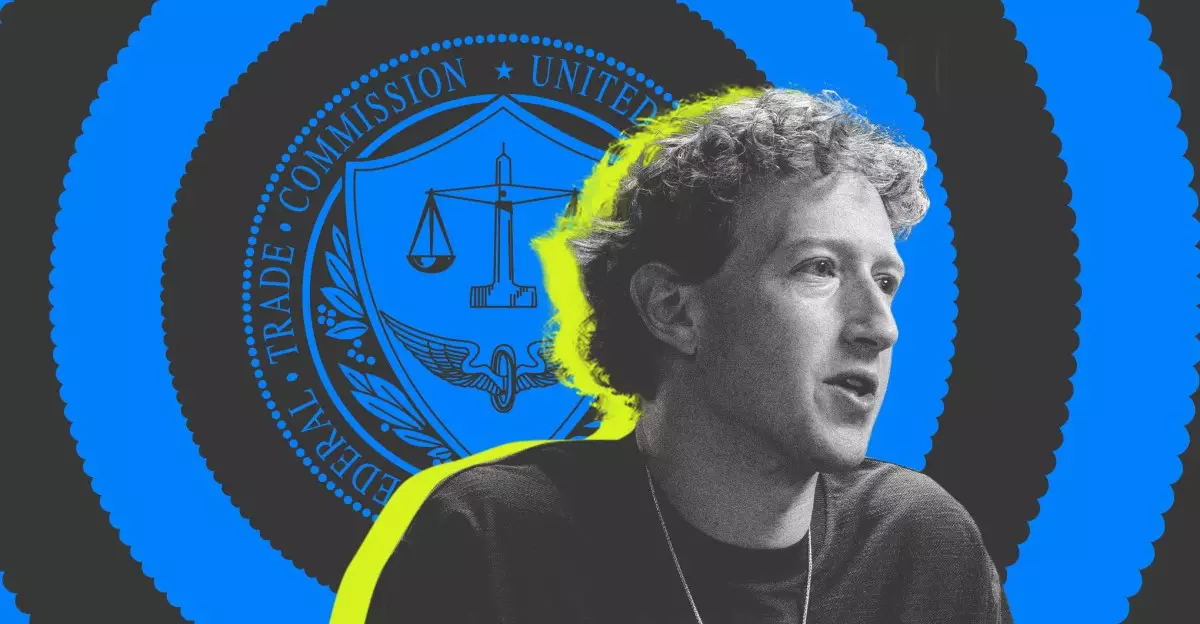In a courtroom encased in the solemnity of legal battles, Mark Zuckerberg has emerged as the defending architect of a social media empire, confronting allegations that could reshape the landscape of digital communication forever. The Federal Trade Commission (FTC) has galvanized its forces against Meta, previously known as Facebook, in a sweeping antitrust case. This trial prompts an exploration not only of Zuckerberg’s strategies as the CEO of Meta but also of the plethora of potential paths the company could have taken. The claimed coerciveness of Meta’s acquisitions—Instagram and WhatsApp—has placed Zuckerberg under the spotlight, illuminating a narrative navigated through uncharted waters of competition and market dominance.
The stakes are monumental, as the outcome could mandate Meta to divest its most significant subsidiaries. As Zuckerberg’s nine-hour testimony unfolds, he reveals insights into the company’s evolution and offers a glimpse into the swirling strategies that shaped Meta’s trajectory. From consideration of making Instagram a standalone entity to ambitious buying attempts for Snapchat, Zuckerberg’s own musings expose a labyrinth of decision-making processes that signify the complex nature of technology leadership.
Understanding Market Mechanics
The FTC presents a compelling narrative of Meta as a monopolistic leviathan, illustrating how acquiring rivals has stifled competition. By effectively absorbing potential threats, including Instagram and WhatsApp, Meta is accused of deliberately skewing the competitive landscape to its advantage. The agency’s characterization of the market as “personal social networking services,” which comprises platforms like Snapchat and MeWe, raises critical questions about how such definitions can be tailored. Zuckerberg has artfully pushed back against this narrow framing, arguing instead for a broader understanding of the competitive ecosystem dominated by players like TikTok and YouTube.
Zuckerberg’s assertion that the market is “fluid” resonates with the multifaceted nature of social sharing platforms today. He suggests that while Meta focuses on connecting friends and family, it also overlaps with diverse services like LinkedIn, which cater to distinct yet sometimes interconnected audiences. This intricate web of interactions raises a pivotal inquiry: where does one service end, and another begin in the vast universe of social networking? Such nuances complicate the FTC’s position and challenge the delineation of market definitions, showcasing how digital spaces evolve rapidly.
The Daring Alternatives
Zuckerberg’s testimony has not only focused on defense but also unwittingly revealed the many alternatives that could have drastically altered the social media landscape. Among the most striking revelations was Zuckerberg’s potential strategy to acquire Snapchat for $6 billion—an offer famously rebuffed by CEO Evan Spiegel. Had that deal gone through, Meta’s growth trajectory could have seen a dramatic acceleration, obliterating competition in a more synchronized digital climate. Such alternative realities pose a critical reflection: how much of Meta’s rise is marked by strategic foresight, and how much is sheer coincidence?
One moment in particular stood out as both whimsical and revealing; Zuckerberg pondered wiping Facebook user friends lists to reignite the novelty of connections. This postulation brushes against critical themes of nostalgia and innovation—paradoxically desiring to reboot a fundamentally social platform by removing its social foundations. Here lies a fascinating conflict: can a behemoth like Meta rejuvenate itself through radical changes, or is the essence of its success tethered to user familiarity and community ties?
The Subtle Dance of Advertising
Another critical aspect of Meta’s business model emerges in its approach to advertising. The FTC suggests a direct correlation between lack of viable alternatives for users and the increasing ad load Meta has imposed over time, a claim Zuckerberg contests. He intimated that at one juncture, the possibility of offering a feed exclusively dedicated to advertisements was considered, driven by the assumption that users found advertising content as appealing as organic posts. This admission lays bare the inherent tension in monetizing social connections—can the fine line between user engagement and commercial exploitation be effectively managed?
This dispute coincides with revelations regarding internal communications within Meta. Documentation revealed Zuckerberg’s concerns about falling behind in the wake of Instagram’s rapid ascent and the potential for messaging services to encroach on typical social media interactions. Such anxieties signal a leader vigilantly aware of competitive currents, striving to secure his company’s future in an ever-evolving industry.
Ultimately, as Zuckerberg’s courtroom saga continues, it invites spectators to engage in broader reflections on the nature of technology, competition, and innovation. It is a compelling tale of strategy enacted amidst uncertainty, revealing that the evolution of Meta may have hinged on decisions that seem audacious today, yet also reflect the responsiveness of a company navigating turbulent waves in a fundamentally transformative environment.

